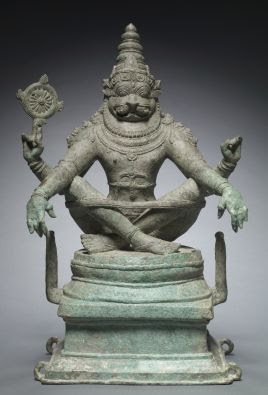by Nina
I’m sure that all of us who use yoga props have been judged for it at one time or another, whether by a teacher, another practitioner, or even just ourselves. In the past I addressed this issue in my post Cheating at Yoga? in which I assured our readers that we did not consider using a prop akin to “akin to engaging in deceit or a dishonest act” and I also wrote a post 7 Reasons Why You Should Love Yoga Props specifically about the benefits of props.
However, I recently read something that should put this issue of whether using props is somehow cheating or not practicing “authentic” yoga to bed once and for all.
In Edwin Bryant’s The Yoga Sutras of Patanjali under one of the few sutras there are about asana (II.46 Posture should be stead and comfortable), Bryant described what some of the poses of that era were (and that Patanjali might be referring to). He listed the most important poses that Vyasa included in his commentary on the Sutras more than 1,500 years ago. Among them was the following:
“(6) Soprasaya, the support pose. This asana involves sitting down with a yoga-pattaka. There is a difference of opinion as to what a yoga-pattaka is, but as the name indicates it was some sort of prop: Sankara takes it to be a table or chair, but pattaka can also refer to a piece of cloth or a board. Whatever may be involved, followers of the Iyengar method may care to note that this sutra indicates that props for asanas have been used for centuries and are, in this sense, authentic.”
Haha, it’s actually called the Support pose! And the bottom line is that the existence of this traditional pose shows that using a prop to make a seated pose more “steady and comfortable” is actually more traditional than practicing a modern yoga pose, such as Triangle pose, without a prop. And that made me remember something that really struck me when I saw the exhibit of yogic art called “Yoga: The Art of Transformation.” I noticed more than statue of a person or god that showed the use of a strap in a seated position like this one:

So there you have it! Using yoga props is an absolutely authentic practice, and although we might not be able to stop others from judging us when we use them we can at least stop judging ourselves.
Follow Yoga for Healthy Aging on Facebook ° To order Yoga for Healthy Aging: A Guide to Lifelong Well-Being, go to Amazon, Shambhala, Indie Bound or your local bookstore.


One of my yoga teachers Recently told a student who was struggling with an asana: “The prop will answer your prayers before god will”.
Iyengar Yoga…